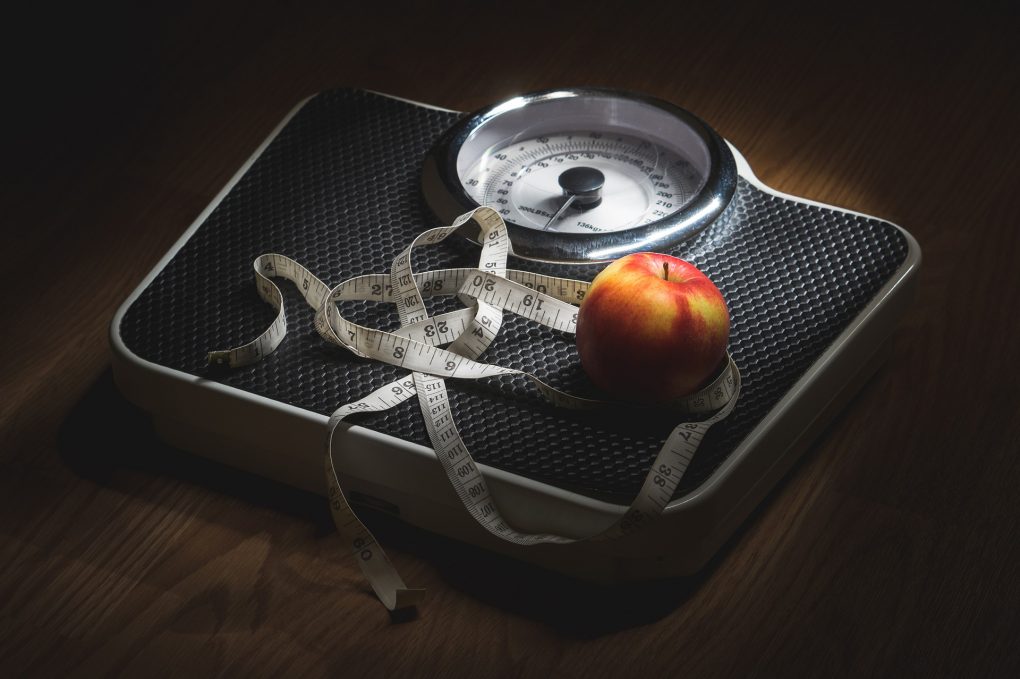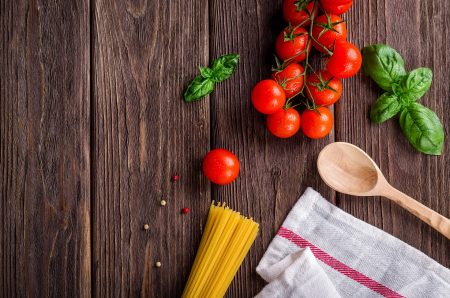
How to deal with obesity?
Today is World Obesity Day. You might wonder: why another post on obesity? After all, we know so much on that topic! There’s news about it all the time on the radio, on TV and in the press. But if our knowledge is so extensive, then why are the statistics on the rise? Why more and more people are overweight? Why can’t we cope with this problem once and for all? Let’s examine the question together and think what we can do about it to protect ourselves and the future generations not from the epidemic but from the pandemic of obesity.
Identify the opponent
Body Mass Index (BMI) is most often used to determine obesity. However, this index is not always reliable. In case of people who do a lot of sport or athletes, BMI may show excess body weight while the exact amount of body fat is on the right level. That’s why measuring your waistline is much more accurate in this respect. When this parameter exceeds 80 cm in women and 94 cm in men, it indicates an increased risk of metabolic complications. Analysis of body composition is an even better test to diagnose obesity. It allows you to estimate the amount of fat. The standards for fat content vary depending on age, but in general it is estimated that if the amount of fat exceeds 25% in men and 30% in women, then obesity must be taken into consideration.
Get to know the enemy’s range
According to data from the World Health Organization (WHO) over 1,9 billion adults were overweight, which accounted for almost 40% of the world population of people over the age of 18. Of these, over 650 million ( 13%) were obese, moreover, the prevalence of obesity in the world tripled in comparison to 1975. Obesity affects children to a big extent. These statistics seem alarming, especially when we consider the fact that obesity is not just a cosmetic defect, but it can also be the cause of many disorders leading to deterioration of health and quality of life. Obese people are more likely to develop hypertension, lipid disorders, heart disease, cancer or type 2 diabetes.
See how obesity tries to hide

Contrary to popular belief, obesity is not always associated with an increased risk of metabolic disorders. It is estimated that approximately 25% of obese people remain metabolically healthy – this is called obesity with normal metabolic rates. If you think, however, that you do not have to fight this type of obesity, then you are wrong. This type of obesity can also be dangerous to our health. However, there is one more type of obesity that is even more difficult to recognize and which is even more dangerous. This is called metabolic obesity with normal body mass. In this case, despite the normal body weight, we observe an increased amount of adipose tissue, which is the cause of metabolic complications typical for obesity, such as type 2 diabetes and cardiovascular diseases.
The enemy is not always that black, or how to develop a strategy for action
Obesity is one of the main public health issues in the modern world. However, if we develop an appropriate strategy, the enemy may not be as black as it is painted. Below you can find some useful tips to help you fight obesity or prevent it.
First of all: cook!
Yes, it’s not a joke. If you prepare your dinner yourself it will certainly be much healthier than the ready-made supermarket options. Moreover, when you cook your food, you have real impact on what your meal contains, whether you choose, for example, white or brown rice, lean pork loin or fat pork neck. Engage all your family in meal preparation, especially the kids. Cooking together is great fun which also helps them develop healthy eating habits and teaches how to make the right choices.
Have regular mealtimes and start your day with breakfast

The old saying goes: eat your breakfast, share your lunch with a friend and give your dinner to your enemy. Unfortunately, we usually do just the opposite. We give up our breakfast and then dinner becomes the most and substantial and calorific meal. It’s a big mistake which not only upsets our metabolism but also fosters the build-up of adipose tissue. Remember that breakfast is the most important meal in your day. It should be eaten within one hour of waking up. This morning meal will set your metabolism at the right speed. Studies carried out so far have indeed confirmed that people who eat breakfast have significantly lower body mass than people who skip the first meal. All meals should be eaten at regular times. Determine your own schedule of meal hours, which is the most convenient for you and your working rhythm, and follow it. Choose option 3 + 2, which includes eating 3 main meals (breakfast, lunch and dinner) and 2 smaller snacks eaten for the second breakfast and afternoon tea. Have meals every three hours. Do not snack between meals. Eat dinner within 2-3 hours before bedtime.
Eat slowly, never until you’re full
If you eat in a hurry, then even after a very calorific meal you may feel hungry for some time. This is because your brain has not yet been able to send you a signal of satiety. As a result, you reach for another product that you have at hand and deliver more energy to the body than it needs. So listen to your body and its needs. Give it time to send the appropriate message. Try to eat meals in peace, avoiding excessive haste. Enjoy the meals you eat and remember – always finish your meal feeling a little hungry.
Separate food from other activities
If you eat and watch TV, read a book or a magazine, then you are likely to consume more than you have planned to. Try to separate separate eating your meal from other activities. Have all your 3 main meals at the table and avoid eating and standing up. Eliminate all distractions that could keep your attention away from food.
If you feel hungry, have a glass of water

If you feel hungry between meals, do not reach for food immediately. In such moments, a glass of water can come in handy, may fool your stomach and divert your attention from food. Remember that hunger is not a feeling that grows infinitely. After a while, the feeling of hunger just passes. Sometimes it’s enough to just ignore it. Besides, studies have shown that the feeling of hunger is very often confused with thirst.
Do not look for opportunities to eat
Try to control your eating behaviour. If you have a habit of snacking while watching TV and you feel the temptation is stronger than your will, limit the time you spend in front of the TV. The time you get in return can be spent in an active way. If there’s a family party coming soon, prepare beforehand. Don’t leave your home feeling hungry and when you arrive choose low-calorie meals or eat smaller portions.
Avoid stocking up on food
Buy only the things you really need. Plan your meals in advance and go shopping with a list. And never do your shopping when hungry. Don’t stock up on cookies and snacks so they don’t tempt in in difficult times. While shopping, opt for low-calorie products. Be a conscious
Note down what you’ve eaten

Taking notes of all your meals and their ingredients will make it easier for you to stock to the rules of your diet and prevent from consuming excessive amount of food. It is often a great way to become aware how much food we really eat over the course of the day. One or two sweets that we have between meals may seem innocent. But when we realize that we have had 10 pieces on one day, then the situation is not that funny anymore. One 20g-chocolate sweet can contain even up to 100 kcal.
Choose varied food products
Choose goods from different groups. Make sure your everyday menu contains vegetables, fruit, cereals, sources of protein (dairy, meat, fish, eggs) and vegetable oils. Opt for wholemeal cereal products (wholemeal bread, thick groats, brown rice, wholemeal pasta). Try to have more vegetables than fruit. Choose a lot of colourful vegetables and fruit, especially eaten raw. Buy only light or semi-skimmed dairy. Eat lean meat (eg. poultry, rabbit, lean beef, pork), preferably with no skin. Try to have sea fish about 2-3 times a week (eg. cod, tuna, salmon, halibut, mackerel). Opt for vegetable oils, such as olive oil, rapeseed oil, flaxseed oil. Avoid animal fats. Remember that the more colourful your plate is, the lower the risk of any potential nutritional deficiencies.
Cut down on highly processed foods
Cut out highly processed foods, fast-foods and sweets. They are usually only a source of empty calories, which means that do not provide a large amount of energy, being at the same time low in vitamins and minerals. Moreover, they contain simple sugars, saturated fatty acids, trans fats and salt. saturated fatty acids, trans fat or salt. Consuming them not only increases the risk of developing obesity, but also increases the probability of its complications, such as: cardiovascular diseases, cancer or type 2 diabetes.
Stay hydrated
Drink 2 litres of water every day, preferably still and low in sodium. You can also have tea, especially herbal, green or white. Quit all sugary sparkling drinks or energy drinks.
Choose the right cooking techniques

Choosing proper cooking techniques is also important in healthy nutrition. Steam cooking is especially recommended as vitamin loss here is the smallest. Moreover, it doesn’t increase the calorific value of meals to such extent as for example frying. You can also cook in water or under pressure as well as roast in an oven dish. Avoid traditional frying or stewing. If you decide to fry, choose non-fat option in a ceramic pan or use those vegetable oils that are best for frying.
Don’t give up the first time you fail
Remember that if you get tempted and have a chocolate bar between the meals, then this one-time fail can’t throw all dieting efforts so far. The worst thing you can do now is to give up. If you have already succumbed to temptation, the best solution will be to increase the intensity of exercise that day or to reduce the portion of the next meal.
Attack on all sides
To make your fight with the enemy even more effective, start working on many fronts and in addition to using a healthy and balanced diet also increase the level of physical activity. Adjust the level of activity to your needs and capabilities as well as your current shape. Gradually try to extend its duration. Remember that physical activity taken regularly (preferably every day, or at least 3 days a week) is the most effective in weight reduction, and it should last at least 30 minutes. Choose mainly aerobic exercise. Try to stay outside as much as possible, and in addition to improving the form you will also notice an improvement in well-being.
Stay alert
If you have succeeded and achieved the intended weight, this does not mean that you can go back to your old (bad) habits with no consequences. Diet is not a temporary fashion or a way to prepare for holidays, after which you can return to your previous eating habits. It’s important to keep the new eating habits for life. If you do not realize it as soon as you lose excessive kilograms, you will gain new ones, unfortunately often more than before. Remember that every attempt will be more and more difficult.
Recap
We are constantly waging war against obesity. We may have lost a few battles, but there is still a chance to win the final game. Remember, however, that whether we win the fight against obesity does not depend on scientists, doctors, pharmacists, personal trainers or dieticians, but on ourselves. Contrary to appearances, the importance of this battle is extremely important, because it can decide the fate of our population. Let’s stand together and fight. Go!
References:
- American College of Cardiology/American Heart Association Task Force on Practice Guidelines, Obesity Expert Panel, 2013. Expert Panel Report: Guidelines (2013) for the management of overweight and obesity in adults. Obesity (Silver Spring). 2014 Jul;22 Suppl 2:S41-410. doi: 10.1002/oby.20660.
- Andolfi C, Fisichella PM. Epidemiology of Obesity and Associated Comorbidities. J Laparoendosc Adv Surg Tech A. 2018 Aug;28(8):919-924. doi: 10.1089/lap.2018.0380.
- Chooi YC, Ding C, Magkos F. The epidemiology of obesity. Metabolism. 2018 Sep 22. pii: S0026-0495(18)30194-X. doi: 10.1016/j.metabol.2018.09.005.
- Ding C, Chan Z, Magkos F. Lean, but not healthy: the ‘metabolically obese, normal-weight’ phenotype. Curr Opin Clin Nutr Metab Care. 2016 Nov;19(6):408-417.
- Inoue Y, Qin B, Poti J, Sokol R, Gordon-Larsen P. Epidemiology of Obesity in Adults: Latest Trends. Curr Obes Rep. 2018 Aug 28. doi: 10.1007/s13679-018-0317-8.
- Phillips CM. Metabolically Healthy Obesity: Personalised and Public Health Implications. Trends Endocrinol Metab. 2016 Apr;27(4):189-191. doi: 10.1016/j.tem.2016.02.001.










Comments No Comments
Join the discussion…